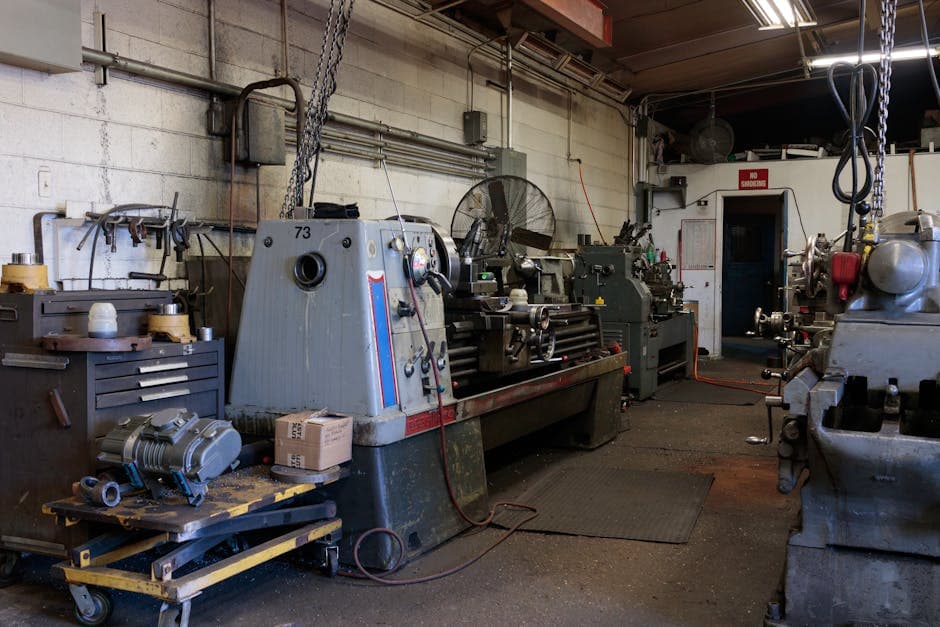
Best Practices for Maintaining Piping Systems
Industrial piping systems are the lifelines of many facilities, transporting fluids, gases, and sometimes solids throughout operations. The integrity of these systems is crucial for safety, efficiency, and regulatory compliance. A well-maintained piping system can last for decades, while a neglected one can lead to catastrophic failures, costly downtime, and potential environmental hazards.
The Importance of Proactive Maintenance
Reactive maintenance—fixing problems after they occur—is often more costly and disruptive than preventing them in the first place. A proactive approach to piping system maintenance offers numerous benefits:
- Extended Service Life: Regular maintenance can significantly extend the useful life of piping systems, delaying expensive replacements.
- Reduced Downtime: Planned maintenance can be scheduled during non-critical periods, minimizing operational disruptions.
- Enhanced Safety: Preventing failures reduces risks to personnel, equipment, and the environment.
- Lower Total Cost: While maintenance requires investment, it's typically far less expensive than emergency repairs and associated production losses.
- Regulatory Compliance: Many industries face strict regulations regarding the integrity of piping systems, particularly those carrying hazardous materials.
Essential Maintenance Practices
1. Regular Inspections
Systematic inspections are the foundation of effective maintenance:
- Visual Inspections: Regular visual checks can identify obvious issues like leaks, corrosion, improper supports, or damaged insulation.
- Non-Destructive Testing (NDT): Techniques such as ultrasonic testing, radiography, and magnetic particle inspection can detect internal flaws without damaging the pipes.
- Thickness Measurements: Regular monitoring of pipe wall thickness helps track corrosion rates and predict remaining service life.
- Thermal Imaging: Identifies hot spots that may indicate flow restrictions, insulation failures, or other issues.
2. Corrosion Management
Corrosion is one of the primary threats to piping system integrity:
- Protective Coatings: Regular inspection and maintenance of both internal and external coatings.
- Cathodic Protection: For buried or submerged pipes, properly maintained cathodic protection systems are essential.
- Chemical Treatment: Water treatment programs that control corrosion, scaling, and biological growth in systems carrying water.
- Material Selection: When replacing components, choosing appropriate materials based on the specific corrosion challenges.
3. Proper Support and Alignment
Mechanical stress can lead to premature failures:
- Pipe Support Inspection: Checking for proper spacing, deterioration, or movement of supports.
- Alignment Verification: Ensuring pipes remain properly aligned, particularly after thermal cycling or vibration exposure.
- Expansion Joint Maintenance: Regular inspection and replacement of expansion joints before they fail.
- Vibration Analysis: Identifying and addressing sources of excessive vibration that can cause fatigue failures.
4. Valve Maintenance
Valves are critical components that require specific attention:
- Regular Exercise: Operating valves periodically to prevent seizure, particularly for emergency shutdown valves.
- Packing and Gasket Replacement: Addressing leaks promptly by replacing deteriorated sealing components.
- Lubrication: Following manufacturer recommendations for lubricating moving parts.
- Testing: Verifying that critical valves function as intended, especially safety-related valves.
5. Insulation Maintenance
Insulation serves multiple purposes and requires proper maintenance:
- Water Intrusion Prevention: Maintaining vapor barriers to prevent water ingress that can cause corrosion under insulation (CUI).
- Physical Protection: Repairing damaged insulation promptly to maintain thermal efficiency and personnel protection.
- Inspection Ports: Installing and utilizing inspection ports to check pipe condition without fully removing insulation.
Implementing a Systematic Maintenance Program
An effective piping maintenance program requires a structured approach:
Developing a Comprehensive Inventory
- Document all piping systems, including materials, sizes, installation dates, and service conditions
- Identify critical systems that would cause significant problems if they failed
- Create accessible isometric drawings and documentation
Risk-Based Inspection Planning
- Assess the likelihood and consequences of failure for different piping sections
- Allocate resources based on risk levels, focusing more attention on high-risk systems
- Determine appropriate inspection intervals and methods based on risk factors
Leveraging Technology
- Computerized Maintenance Management Systems (CMMS): Scheduling and tracking maintenance activities
- Digital Twin Technology: Creating virtual models of piping systems to predict behavior and potential issues
- IoT Sensors: Continuous monitoring of critical parameters like pressure, temperature, and vibration
- Data Analytics: Identifying patterns and predicting maintenance needs based on historical data
Training and Competency
- Ensure maintenance personnel are properly trained on inspection techniques and equipment
- Develop clear procedures for common maintenance tasks
- Keep staff updated on evolving best practices and technologies
Documentation and Continuous Improvement
Maintaining thorough records is essential for an effective program:
- Document all inspections, findings, and repairs
- Track trends to identify recurring issues or problem areas
- Regularly review and update the maintenance program based on findings and changing conditions
- Conduct root cause analysis when failures occur to prevent recurrence
Conclusion
A systematic approach to piping system maintenance is a sound investment that pays dividends in terms of safety, reliability, and cost savings. By implementing these best practices, industrial facilities can extend the service life of their piping systems, reduce the risk of catastrophic failures, and minimize total lifecycle costs.
At HPATS, we offer comprehensive support for industrial piping systems, including high-quality components, inspection services, and expert consultation on maintenance practices. Contact our team to learn how we can help you implement an effective maintenance program tailored to your specific needs.
About the Author
Michael Chen
Expert in Maintenance with years of industry experience. Regularly contributes insights and analysis on industrial trends and technologies.
You Might Also Like

Digital Transformation in Oil & Gas: Key Technologies for 2024
Explore how digital twins, AI, IoT, and robotics are revolutionizing the oil and gas industry in 2024, creating opportunities for enhanced efficiency, safety, and sustainability...

Advanced Water Treatment Technologies: Innovations for Industrial Applications
Discover the latest innovations in industrial water treatment technology, from smart water management systems and advanced membranes to PFAS removal solutions and resource recovery systems...

The Importance of Quality Valves in Oil and Gas Operations
In the oil and gas industry, the reliability and performance of equipment are paramount to ensuring operational efficiency, safety, and envi
